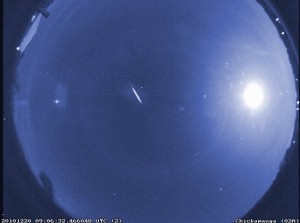Now showing for stargazers: Meteor shower
MANILA, Philippines—New Year fireworks may continue to light up the sky in the first few evenings of January but Filipino stargazers may get to spot some “falling stars” too.
From Jan. 1 to 7, the Quadrantid meteor shower will be active in the evening sky and may best be viewed over countries with high northern latitudes, but it will be visible in the Philippines, government astronomers said.
The Quadrantids, which count among the most prolific annual meteor showers, will reach their peak on Jan. 3 and 4, the Philippine Atmospheric, Geophysical and Astronomical Services Administration (Pagasa) said.
The meteors may then be seen “falling” at the rate of 40 meteors per hour, Pagasa Acting Administrator Vicente Malano said in the agency’s monthly astronomical diary.
“The shower will appear to radiate from the constellation of Bootes… and hit the Earth’s atmosphere at a rate of around 40 kilometers per second,” he said.
Article continues after this advertisementMeteors come from leftover comet particles and bits from broken asteroids that leave a dusty trail when they come around the sun, according to the US National Aeronautics and Space Administration (Nasa).
Article continues after this advertisement“Every year, the Earth passes through these debris trails, which allows the bits to enter our atmosphere where they disintegrate to create fiery and colorful streaks in the sky,” Nasa said.
Unlike most meteor showers which originate from comets, the Quadrantids originate from an asteroid, 2003 EH1, which takes 5.52 years to orbit the sun once, the agency said on its website.
The Quadrantids are best viewed during the night and predawn hours, according to Nasa.
“To view the Quadrantids, find an area well away from city or streetlights. Come prepared with a sleeping bag, blanket or lawn chair,” it said.
“Lie flat on your back with your feet facing north and look up, taking in as much of the sky as possible. In less than 30 minutes in the dark, your eyes will adapt and you will begin to see meteors. Be patient. The show will last until dawn, so you have plenty of time to catch a glimpse.”
